Patriot, Tom Conroy, educates us on the fundamental gunsmithing tools you need to do the most basic work maintaining or improving your firearms.
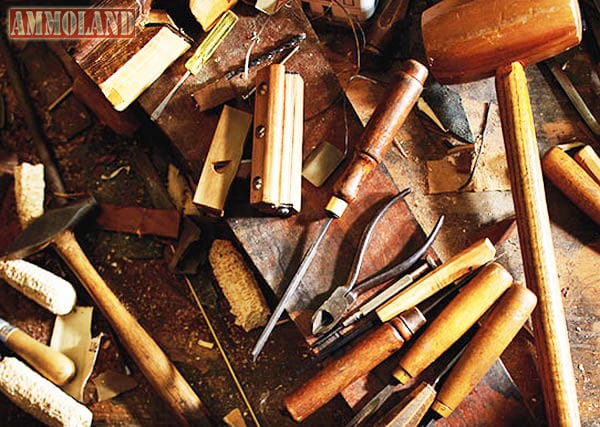
Midwest USA – -(Ammoland.com)- Good gunsmiths are part artist, part mechanic, with some woodworker, engineer, chemist, and stage magician thrown in the mix.
Truly great gunsmiths produce ballistic masterworks that end up on display in places like the NRA National Firearms Museum. No matter what skill level they might have, all gunsmiths will find themselves facing some similar tasks and challenges while working on guns.
If you aren’t a gunsmith, and just want to be able to do minor work or modifications to your guns, you’ll still need some gunsmithing tools. And when you’re looking for gunsmith tools and supplies, there just isn’t any place that can match Brownells. They’ve been supplying gunsmiths with high-quality equipment since 1939. And while Brownells has really expanded into all sorts of other areas like ammo, reloading, archery, and emergency and survival gear, they’re still the go-to place for gunsmith tools.
So what are some of the specialized Gunsmithing Tools required to effectively work on guns?
I’ve compiled a list of what I believe are the Top 5, must-have gunsmithing tools. I know, I know, only 5? I had to make some serious cuts to get it pared down. For example, while I don’t have any files or India stones on the list, they are absolutely vital for working on guns. The same goes for dial calipers . They are pretty much required for doing any sort of serious work on guns.
In making this list, I tried to focus on the kind of basic, foundational tools that every single gunsmith will have, and that non-gunsmiths should also have, if they plan on doing anything as simple as putting a new trigger in their AR-15, or maybe adding a different stock to their Remington 870.
But here are my Top 5 tools gunsmiths need for working on all sorts of guns.
5. A Gunsmith Vise
Before you can actually work on a gun, you must be able to hold it still. Because most of us are not born with a third hand, the best way to hold a gun still is with some sort of a vise. You can use a bench vise, like the Shop Fox Gunsmith Vise This model lets you position the vise body in different ways to help you do all sorts of different jobs.
For guns that accept detachable magazines, you can get specially-made blocks that snap into the mag well, and fit down into the vise, so you can secure the firearm without any part of it touching the vise itself.
You can also upgrade just about any vise by using non-marring jaws that stay put with magnets. That way you won’t scratch that pretty bluing job, or mess up that gorgeous stick of black walnut. That’s one of the complicating factors when it comes to gunsmith tools. They often have to be specially designed so they let you apply force to a gun without damaging the finish or the stock. Gunsmithing often takes a little more finesse than clamping down a lawnmower blade so you can sharpen it with a big honkin’ file or a bench grinder.
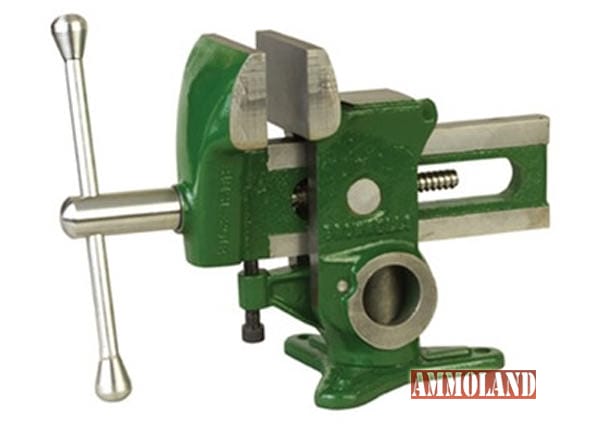
4. Bench Block
Like a vise, a bench block is a way to help hold a gun steady while you drive a pin either into or out of it. Bench blocks come in different sizes, have holes in them that let pins drop free and clear, and are sometimes contoured to fit specific models of guns. Some of the best bench blocks are made out of a really dense polymer that protects the finish of gun while you drive pins but is solid enough to help you keep the gun in place while you work.
Again, the goal is to do the required work without inflicting any damage on the gun. It’s sort of like the gunsmith version of the Hippocratic Oath. First, do no harm.
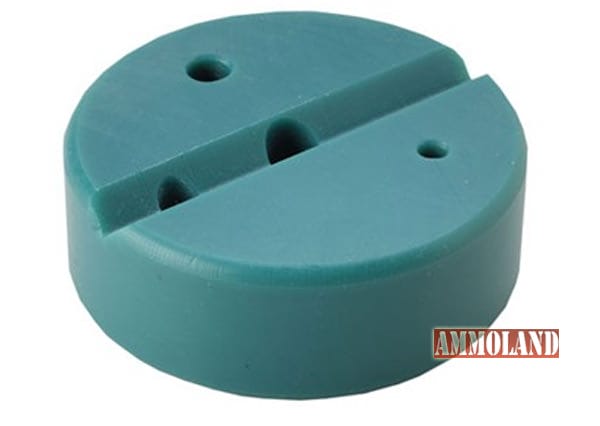
3. Nylon/Brass Hammer
Sometimes, you do need to smack pins and parts to get them to go into place. But just like with a vise and the bench blocks, the trick is to do so without scratching, chipping, or otherwise dinging up the finish. One of the best tools for this delicate balancing act of just enough gentle force is the Nylon/Brass Hammer . You can use the brass end to put solid hits onto really stubborn pins. The nylon end is for those more delicate jobs, where one over-zealous tap can cost you a ruined finish.
Either way, you’ll find such a hammer on just about every gunsmith’s bench.

2. Pin Punch
Of course, you’ll also need a pin punch to move those pins. One of the best sources of pin punches is Starrrett . These are way more than just boring hunks of metal with different diameter heads. Starrett punches are finely made, with knurled center sections for precise control, and clear markings so you know exactly what size you’re handling. You can buy them separately, or just get the set, which might make the most sense, considering how many different pin sizes you’ll encounter.
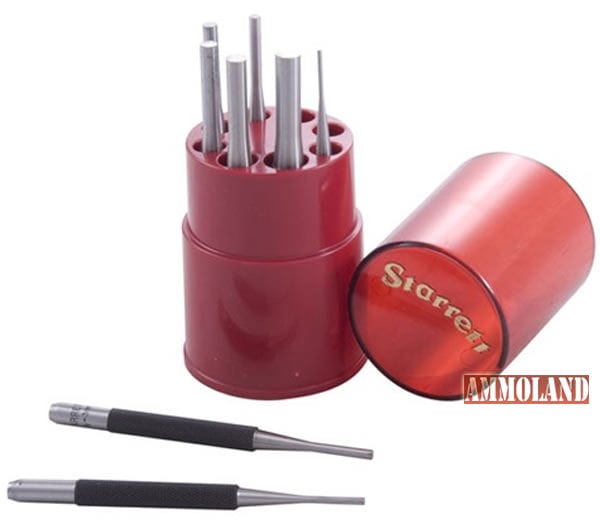
1. Gunsmith Screwdrivers
I’ve made this mistake myself a few times – using regular hardware store screwdrivers on the screws in my guns. Of course, I’ve boogered a few firearm screws in my time. And nothing screams out “Amateur!” quite like a scratched-up, marred screw head on an otherwise finely-finished gun.
Gunsmith screwdrivers are not like hardware store screwdrivers. The heads are specially beveled and tapered to perfectly fit into the screw heads and support them, so the edges of the slot aren’t damaged, and you don’t scratch off the finish, and otherwise just make a mess of them.
You can get these special gunsmith’s screwdrivers either with fixed-blade designs, or the “Magna-Tip” that has a hollow, magnetic end that lets you swap out various steel bits. You’ll be getting a bunch of them, and you might even want to just break down and a lot of them at once.
Even if you’re not a gunsmith, and don’t plan on becoming one, if you own more than just a couple of guns, you really ought to get yourself some specialized gunsmith screwdrivers.
Trust me on this one, okay? Don’t learn the hard way. It’ll save you some tears and cursing in the long run.
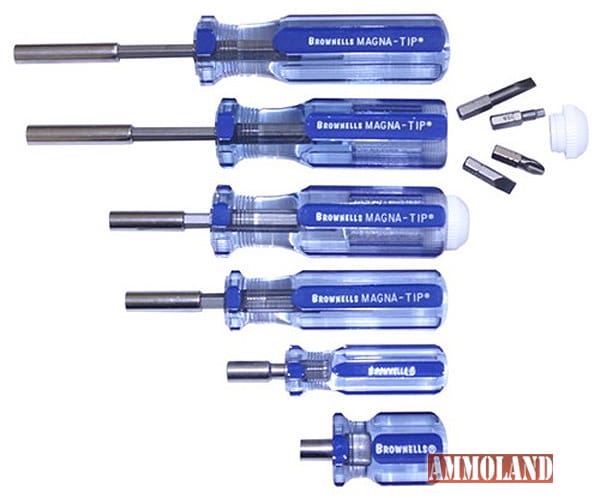
The Gunsmithing Tools For The Job
While gunsmiths are sort of mechanics for firearms, the tools they use are not exactly the same type you’d see a dedicated grease monkey using to loosen bolts under the hood of a pickup truck. Most people don’t care what the bolts that hold their car’s battery bracket in place look like. Lots of people do care what the screw head that holds the forearm on Grandpa’s fine Italian over-under looks like.
Investing in some high-quality, purpose-built tools is one way to make sure you lay a solid foundation upon which to build your house of gunsmithing skills. And for us non-gunsmiths, getting a few of these tools will make minor repairs and adjustments easier to accomplish and just downright more fun to do.
Want to take your gunsmith skills to the next level? Then check out the Sonoran Desert Institute School of Gunsmithing.
Thomas Conroy is a firearms aficionado and writer who lives in the Midwest.
